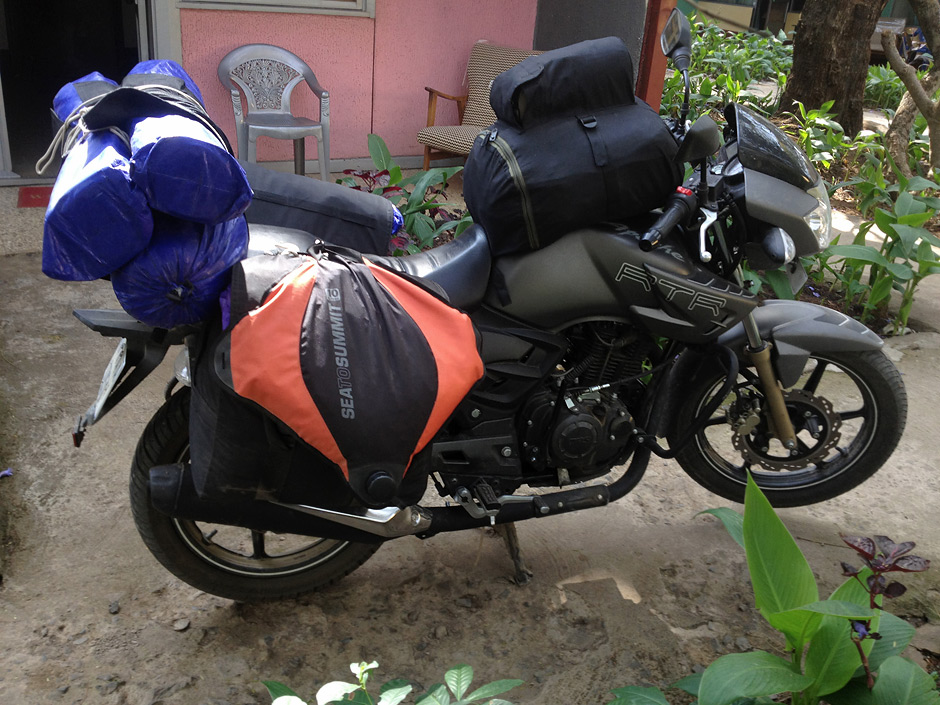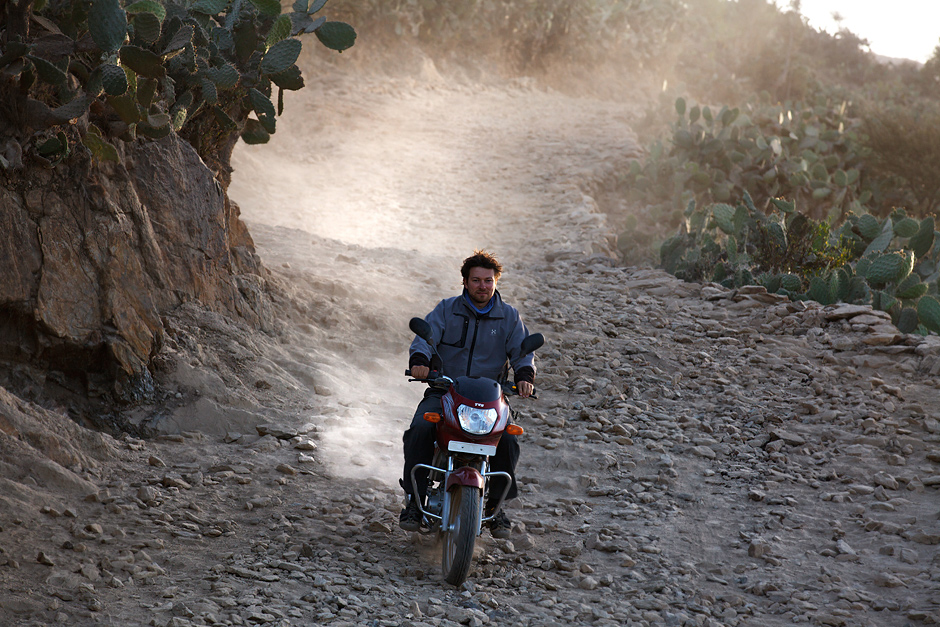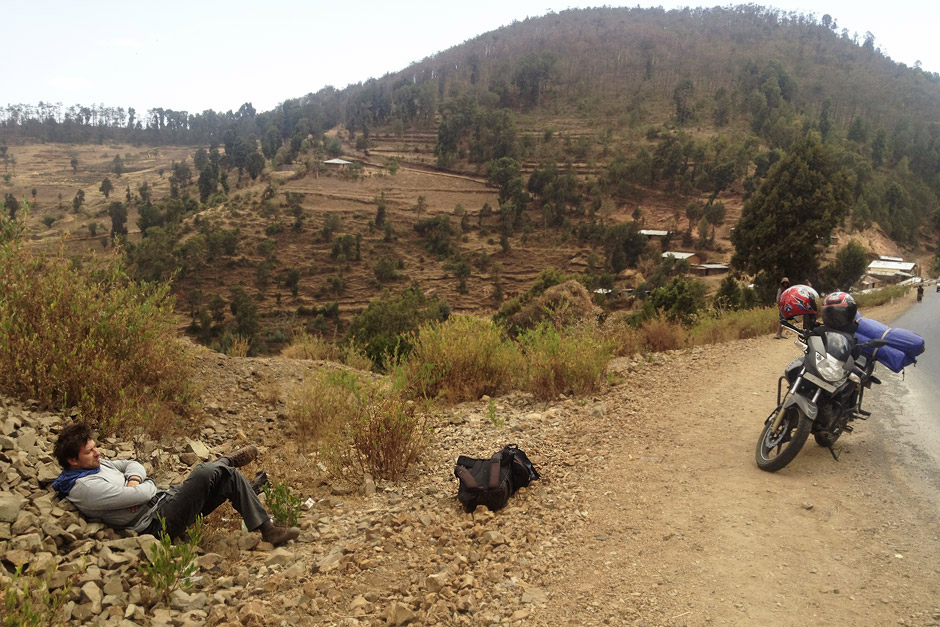Riding a Motorcycle around Ethiopia
 Ethiopia is vast, it’s diverse and it is strikingly beautiful. Despite all the difficulties and the challenges that independent travel in Ethiopia brings, the country is an absolutely ideal place for motorcycle riding. I figured from the beginning that to truly explore this fascinating land over a longer period of time, a motorcycle would be the best, most convenient and most affordable mode of transportation. The only problem - a total lack of information anywhere on how to go about doing this, unless you’re not coming with your own motorbike. For this reason I have decided to dedicate a blog post to the very topic of riding around Ethiopia, from acquiring a motorcycle to what’s in store once you hit the road.
Ethiopia is vast, it’s diverse and it is strikingly beautiful. Despite all the difficulties and the challenges that independent travel in Ethiopia brings, the country is an absolutely ideal place for motorcycle riding. I figured from the beginning that to truly explore this fascinating land over a longer period of time, a motorcycle would be the best, most convenient and most affordable mode of transportation. The only problem - a total lack of information anywhere on how to go about doing this, unless you’re not coming with your own motorbike. For this reason I have decided to dedicate a blog post to the very topic of riding around Ethiopia, from acquiring a motorcycle to what’s in store once you hit the road.
The state of Ethiopian roads
Most of the main roads in Ethiopia are actually surprisingly good, as in very good. It’s not unusual to find yourself riding at over 100km/hour and the lack of traffic means pretty stress-free riding, just watch out for animals.
Of course it isn’t much fun sticking to main roads and here’s where it gets challenging. There are some incredibly tough roads in the Ethiopian countryside too (see video above to get an idea). So, what motorcycle will do the job?
Which motorcycle?
I will only talking about the motorcycles which are readily and easily available in the country. Initially I was misinformed that I needed something big and powerful, and, while some people are indeed bringing big machines to Ethiopia from outside, there is absolutely no need for anything like that. Maybe a bigger bike will be more comfortable, but, it’s far from a necessity.
Thankfully, in recent years Ethiopia has seen a boom in affordable, imported motorbikes from India. I’ve had a lot of experience with Bajaj Pulsars and Hero Honda CBZ, while I was in India. In fact, I did about 40,000 km on these in all kinds of situations with virtually no problems.

Since the Bajaj Pulsar wasn’t available and there is still no Hero Honda, in Ethiopia, I opted for a TVS Apache, the 180cc version. The reason for my choice was the fact that there would be two of us - me and my wife and, we’d be carrying about 40kg of luggage–clothes, photographic gear and occasionally, extra water, you can see the bike fully loaded above. I wanted something pretty strong. The bike turned out to be an absolute workhorse. Sure it wasn’t perfect, it vibrated a lot past 60km/hour, but, never once did it struggle up the insane hills that we climbed with it and it handled any terrain problem free. Over the 5 months and 10,000 km that I covered on that bike, I didn’t have a single issue–nothing wrong with the electronics, nothing with the engine, no complaints at all. We did have a few flat tires, but luckily, they were tubeless on this model and we managed to fix them easily with a repair kit we bought at Mercato.
I got the motorbike new from a TVS dealer in Addis Ababa, pretty much the only city where you can buy the relatively “big” bikes in Ethiopia. The cost of the new bike in 2011 was 46,000 Bir, that at the time of writing was about US $2600 and, this is the downside, though the Indian bikes in Ethiopia are affordable, they are still relatively expensive. The same bike in it’s mother country is about half the price.

If you are planning on going solo and on not having too much luggage, I strongly recommend looking at the TVS GLX 125cc motorcycle. I got this bike later, for my friend and translator to use, as having three people on the Apache was not the most comfortable way of getting around. The GLX is obviously not as powerful, but, very surprisingly it too made it up the most challenging and steep hills. It only struggled once, and that, only because my friend miss-timed his ascent and used the wrong gear. The engine just pulls the bike up, slowly, but surely it ascends virtually any hill, and, believe me, we challenged it, a lot! Above is an image of me on the GLX. That’s the better part of one of the more challenging mountain roads we rode on it. A new GLX goes for about 30,000 Bir or approximately US $1700.
Other motorcycles to consider are the Suzuki 185cc and the Yamaha 175cc models available in Ethiopia, however, the price jump for these is quite steep and they aren’t incredibly comfortable for two passengers. You might get better re-sale value for them, but, you also never know how much abuse the bike might take during the trip, so, by the end, you might not get as much as you expected. The cost of the Suzuki and the Yamaha is closer to US $5000.
A word about Chinese motorbikes. These are cheaper than any other options, but I have heard very mixed reports about these machines. You can see immediately that the built quality is definitely a step below, the clutch cables resemble bicycle cables more than motorcycle ones, and, it has been reported that parts like to fall off of these Chinese creations. I’d still like to try some of the Lifan off-road models, but didn’t didn’t quite have the courage, nor, didn’t want to spend my money to try one. I believe they go for close to US $1500.
Riding on Ethiopian roads
As I already mentioned, Ethiopian roads are mostly traffic-free. This means that riding is also relatively stress free, the only “vehicles” you’ll be regularly overtaking are carts, pulled by horses, donkeys or camels. Because the roads are in good shape and there isn’t much traffic, it is possible to cover fairly long distances. I covered distances, which in most Asian countries would usually be unthinkable, 400km, 460km, 530km–all doable. It's tiring enough that you lie down on a pile of rocks (image below), but doable nevertheless.

The main concern on the roads of Ethiopia is slowing down around villages, which are full of children and animals. The safest thing to do is to slow down, to almost walking pace, when you aren’t sure that people, donkeys and goats or whoever else will get out of your way.
Off-roading in Ethiopia
As I am not really a biker, but a photographer with the desire to get around in the most practical way, I didn’t really ride off-road just for the sake of it. However, outside of the main roads, you’re basically off-road all the time anyway, so I saw the great potential that Ethiopia has. The bike that I chose was not ideal for riding on ploughed fields, of which there are many, but perhaps another, specialized machine would allow for a lot of fun doing this. In any case, Ethiopia seems like a great place to go off-road and off-road adventures await. :)
Buying and registering the motorbike
Before making the payment for the motorcycle, I wanted to make sure that I can be its legal owner, I wanted the vehicle to be in my name. For this I went to the Ministry of Transportation, which told me that I had to carry out a rather peculiar procedure. I had to go to the Ministry of Tourism in order to get written proof that I am a tourist, as if my tourist visa was not enough. The Ministry of Tourism issued me a letter, which would need to be taken to the Department of Foreign affairs to get stamped, approved, then taken back to the Ministry of Transportation. Most of the folks had no idea what the heck I wanted, but once I found the right people, they were all very accommodating and somehow, magically, I got all the stamps and all the letters, without having to pay a single Bir, which kinda puzzles me about the whole purpose behind the procedure.
I did finally have to pay close to US $100 for the registration of the vehicle, the technical check-up and the number plates, which were not available on the day. The office workers initially said it would be a 5 day wait, but with some persistence, they got it to me the next day.
You have to run around all over the city to get to these places. A taxi is the best way of doing this, but it’ll be so costly, that it’s better to just hire a driver for a day, or more likely, two.
A word on hiring or buying a second-hand motorcycle
A simple advice on this would be "Don't do either". The number of ways in which a newly arrived foreigner can get cheated in Ethiopia is incredible, by renting or buying a second-hand motorbike, you are almost inevitably setting yourself up to be ripped off one way or another. That's the worst case scenario. But, even in a better scenario, you still don't know exactly what you're getting. From what I've seen, the turn-over for motorbikes isn't incredibly high in Ethiopia and as a general rule, if someone is selling a motorbike, it's really old, and, not in the best shape. Of course, if you're mechanically minded and love fixing things - go for it!
Well, that’s about it. I’m with family, not taking any photos for some time, so, I guess there won’t be much to blog about, well, apart from my trip to Somaliland, which, given time, I will talk about in the near future.